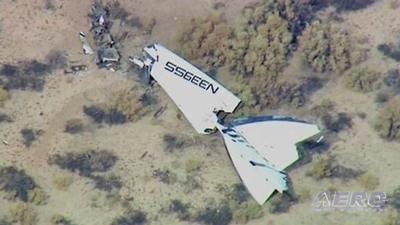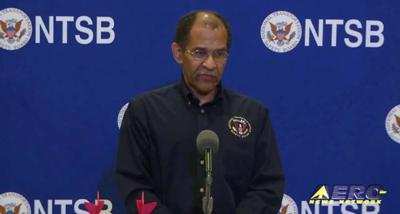Board Determined That Scaled Composites Did Not Plan For Possibility That Feather System Might Be Unlocked Early
In its official media release, the National Transportation Safety Board went into more detail about its findings and determination of the cause of the Oct. 31, 2014 in-flight breakup of SpaceShipTwo. The board said that Scaled Composites failed to consider and protect against human error and the co-pilot’s premature unlocking of the spaceship’s feather system as a result of time pressure and vibration and loads that he had not recently experienced.

SpaceShipTwo was a commercial space vehicle that Scaled Composites built for Virgin Galactic. The vehicle broke up during a rocket-powered test flight, seriously injuring the pilot and killing the co-pilot.
The feather system, which was designed to pivot the tailboom structures upward to slow the vehicle during reentry into the earth’s atmosphere, was to be unlocked during the boost phase of flight at a speed of 1.4 Mach. The copilot unlocked the feather at 0.8 Mach; once unlocked, the loads imposed on the feather were sufficient to overcome the feather actuators, allowing the feather to deploy uncommanded, which resulted in the breakup of the vehicle.
The Board found that Scaled Composites failed to consider the possibility that a test pilot could unlock the feather early or that this single-point human error could cause the feather to deploy uncommanded. The Board also found that Scaled Composites failed to ensure that test pilots adequately understood the risks of unlocking the feather early. Investigators found that the only documented discussion with the accident pilots about the loads on the feather as the vehicle transitioned from subsonic to supersonic flight occurred more than 3 years before the accident.
The FAA was responsible for evaluating Scaled Composites’ experimental permit applications for test flights of the vehicle. After granting an initial permit and renewing the permit once, the FAA recognized that Scaled Composites’ hazard analysis did not meet the software and human error requirements in FAA regulations for experimental permits. The FAA then waived the hazard analysis requirements related to software and human errors based on mitigations included in Scaled Composites’ experimental permit application; however, the FAA subsequently failed to ensure the mitigations in the waiver were being implemented by Scaled.
NTSB Chairman Christopher A. Hart emphasized that consideration of human factors, which was not emphasized in the design, safety assessment, and operation of SpaceShipTwo’s feather system, is critical to safe manned spaceflight to mitigate the potential consequences of human error.

“Manned commercial spaceflight is a new frontier, with many unknown risks and hazards,” Hart (pictured) said. “In such an environment, safety margins around known hazards must be rigorously established and, where possible, expanded.”
The Board made recommendations to the Federal Aviation Administration and the Commercial Spaceflight Federation. If acted upon, the recommendations would establish human factors guidance for commercial space operators and strengthen the FAA’s evaluation process for experimental permit applications by promoting stronger collaboration between FAA technical staff and operators of commercial space vehicles.
“For commercial spaceflight to successfully mature, we must meticulously seek out and mitigate known hazards, as a prerequisite to identifying and mitigating new hazards,” Hart said.
(NTSB Images)
 Airborne 05.10.24: Icon Auction, Drunk MedEvac Pilot, Bell ALFA
Airborne 05.10.24: Icon Auction, Drunk MedEvac Pilot, Bell ALFA ANN's Daily Aero-Term (05.13.24): ILS PRM Approach
ANN's Daily Aero-Term (05.13.24): ILS PRM Approach ANN's Daily Aero-Linx (05.13.24)
ANN's Daily Aero-Linx (05.13.24) Airborne-NextGen 05.07.24: AI-Piloted F-16, AgEagle, 1st 2 WorldView Sats
Airborne-NextGen 05.07.24: AI-Piloted F-16, AgEagle, 1st 2 WorldView Sats Airborne 05.08.24: Denali Update, Dad-Daughter Gyro, Lake SAIB
Airborne 05.08.24: Denali Update, Dad-Daughter Gyro, Lake SAIB




